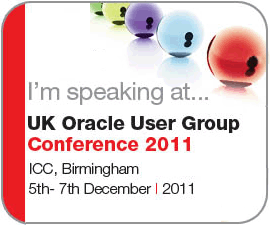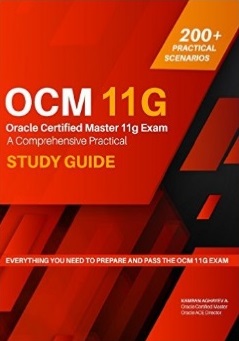Yestarday, after successfully applying an interim patch to the 3 node clusterware environment, I decided to share my experience with you. In this blog post, you can find some best practicec that I think must be followed before and during patch insallation to bring the downtime and failure risks to the minimum.
First of all, make sure you read the following metalink notes:
Master Note For OPatch (Doc ID 293369.1)
FAQ: OPatch/Patch Questions/Issues for Oracle Clusterware (Grid Infrastructure or CRS) and RAC Environments (Doc ID 1339140.1)
Before applying any interim patches or upgrading the database or the clusterware, make sure you have answers to the following questions:
– Have you tested the patch installation?
– Have you tested rollback of the patch?
– What you will do if you can’t rollback the patch with default rollback mechanism?
– What you will do if you fail to open the database after the patch installation?
– Do you have a backup? Have you tested it? What if you don’t have enough time to restore?
Here is the list of what I would prefer to do before applying any interim patches to the mission critical environment:
– Backup the home folder that is going to be patched
tar -cvf grid_home_before_patch.tar /home/oracle/app/11.2.0
If the patch installation goes wrong and you can’t rollback the patch using default method, restore the backup of the installation home folder and bring the database (clusterware) up.
– Make sure you have a full backup of the database
Most probably you will not go with the restoration, but you never know what might happen)
– Make sure your backup is recoverable
Yes. This might be a discussion topic, but I strongly believe (as an author of the RMAN Backup and Recovery book  ) in “If you don’t test your backup, you don’t have a backup” philosophy. Restore it and make sure a) The backup is restorable/recoverable b) Your restore/recover scripts works fine. In my experience, I had a situation where the restore of the backup failed while restoring it for the developers for the testing purpose because of non tested recovery scripts. I heard a situation (a couple of years ago when I attended a wonderful OOW session) where one of the attendees complained how they failed to restore a backup when the production environment failed and this downtime (for days) costed them for a couple of million dollars.
) in “If you don’t test your backup, you don’t have a backup” philosophy. Restore it and make sure a) The backup is restorable/recoverable b) Your restore/recover scripts works fine. In my experience, I had a situation where the restore of the backup failed while restoring it for the developers for the testing purpose because of non tested recovery scripts. I heard a situation (a couple of years ago when I attended a wonderful OOW session) where one of the attendees complained how they failed to restore a backup when the production environment failed and this downtime (for days) costed them for a couple of million dollars.
– Make sure you have a Standby database.
Why? Imagine you took 30 minutes downtime to apply the patch and for any reason you were not able to do it and can’t rollback because you are in the middle of the patch apply procedure and trying to fix the issue. Or you can’t rollback the patch for any reason. You stuck! And you don’t have time to solve it. And you are forced to open the database right away. And you can’t do it as well. In this critical case, you can forward the applications to the Standby database. Build up a standby database, make sure archived log files of the production database are shipping to the standby server. You can also perform a failover to test your standby database and build it up again.
– Test the patch apply procedure on the test environment with the “same binaries”.
Clone the database and clusterware soft to the test machine (or install the same release and apply the same patches as in the production environment) and apply the patch. Get the errors in the test environment before you get them in the production.
– Make sure there’s no any session runinng in the background related with the binaries of the home that is being patched.
Yesterday, when I was trying to apply an interim patch to the 3 node clusterware (11.2.4) I came up with the following error:
Backing up files…
UtilSession failed: Map failed
java.lang.OutOfMemoryError: Map failed
Log file location: /home/oracle/11.2.0/grid_1124/cfgtoollogs/opatch/opatch2015-10-01_17-40-56PM_1.log
OPatch failed with error code 73
The reason was not the memory at all, we were having a lot of free memory at that time. There were some binary files in use in the background despite the fact that the whole clusterware stack was down. Anyway, I killed all processes and the installation proceeded.
The following metalink note also might be useful – OPatch Apply/Rollback Errors: ‘Prerequisite check “CheckActiveFilesAndExecutables” failed’ (Doc ID 747049.1)
– Download the latest OPatch
Check the following metalink note to download the latest OPatch. How To Download And Install The Latest OPatch Version (Doc ID 274526.1)
Download and extract it under the home folder that is going to be patched. Add the $GRID_HOME/OPatch or $ORACLE_HOME/OPatch to the PATH environment variable. Make sure which opatch command returns you a result
– Make sure you have enough free space in the mount point where the home folder reside.
A few years ago when I was trying to install a patch to the production environment, I decided to try it on the test environment (10 minutes before patching a production database). I ended up with the “There is no free space to proceed the installation” error. Home folder was full, and OPatch was taking backup of the binaries and library files that are being patched. Check the following metalink note for more informaton: Opatch Fails Updating Archives with ” No space left on device ” Error. (Doc ID 1629444.1)
– Bring the instance down before patching
If you have a Grid Infrastructure installed, you have a RAC database and you plan to apply the patch node by node without a downtime, bring the instance of the node you’re patching using the following command:
srvctl stop instance -d RACDB -i RACDB1
Why? Because if you start installing the patch and run the rootcrs.pl -unlock command which is the first step that brings the clusterware stack down, the database will be closed with ABORT mode and non of the sessions will be failed over.
– Try to rollback the patch installation at test environment after installing it
Why? Feel how you should rollback (and see if you get any error) the specific patch if you failed the installation and can’t proceed, or you installed successfully, but it caused another bug or problem. Check the following metalink note to learn how to rollback the patch and run opatch lsinventory to make sure it is rollbacked. How to Rollback a Failed Interim Patch Installation (Doc ID 312767.1)
Sometimes, rollback also might fail  In this case, the best option is to restore the whole home folder from the backup, but it is not mentioned in ths metalink note OPatch Fails to Rollback Patch Due to Relink Errors (Doc ID 1534583.1)
In this case, the best option is to restore the whole home folder from the backup, but it is not mentioned in ths metalink note OPatch Fails to Rollback Patch Due to Relink Errors (Doc ID 1534583.1)
– Debug the OPatch if it is stuck
You can use OPATCH_DEBUG=TRUE parameter to debug the OPatch. If it doesn’t generate enough information, use truss (or strace in Liunx) to debug OPatch. Check the following metalink note to learn how to use truss with OPatch. How To Use Truss With OPatch? (Doc ID 470225.1)
Opatch might also hang due to corrupted jar and java executables. Check this metalink note – opatch napply Hanging (Doc ID 1055397.1)
This is all I have  Please let me know if this document helped you and share your experience with me
Please let me know if this document helped you and share your experience with me  Have a successfull patching days ahead!
Have a successfull patching days ahead! 









 ) in “If you don’t test your backup, you don’t have a backup” philosophy. Restore it and make sure a) The backup is restorable/recoverable b) Your restore/recover scripts works fine. In my experience, I had a situation where the restore of the backup failed while restoring it for the developers for the testing purpose because of non tested recovery scripts. I heard a situation (a couple of years ago when I attended a wonderful OOW session) where one of the attendees complained how they failed to restore a backup when the production environment failed and this downtime (for days) costed them for a couple of million dollars.
) in “If you don’t test your backup, you don’t have a backup” philosophy. Restore it and make sure a) The backup is restorable/recoverable b) Your restore/recover scripts works fine. In my experience, I had a situation where the restore of the backup failed while restoring it for the developers for the testing purpose because of non tested recovery scripts. I heard a situation (a couple of years ago when I attended a wonderful OOW session) where one of the attendees complained how they failed to restore a backup when the production environment failed and this downtime (for days) costed them for a couple of million dollars.